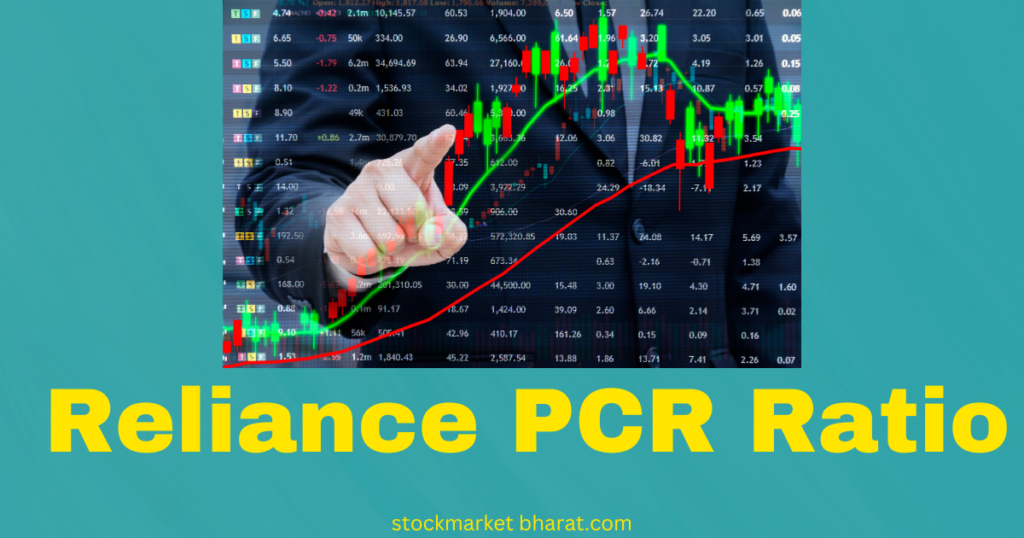Reliance PCR Ratio
Understanding the PCR Ratio for Reliance
The Put-Call Ratio (PCR) is a key technical indicator used by traders and investors to gauge market sentiment in the derivatives segment. For a stock like Reliance Industries Limited (RIL)—one of India’s most actively traded stocks—the PCR ratio plays a crucial role in understanding the overall trend, whether bullish, bearish, or neutral.
In this blog, we will explore:
- What is the Put-Call Ratio (PCR)?
- How does PCR apply to Reliance stock (RIL)?
- How traders use PCR for trading decisions?
- Factors influencing Reliance PCR levels.
- Limitations of relying solely on PCR for stock market analysis.
What is the Put-Call Ratio (PCR)?

The Put-Call Ratio (PCR) is a sentiment indicator used in the stock and options market. It is calculated using:
PCR=Open Interest of Put OptionsOpen Interest of Call Options\text{PCR} = \frac{\text{Open Interest of Put Options}}{\text{Open Interest of Call Options}}
or
PCR=Volume of Put OptionsVolume of Call Options\text{PCR} = \frac{\text{Volume of Put Options}}{\text{Volume of Call Options}}
How to Interpret PCR?
- PCR > 1 → More put options than call options → Bearish sentiment (Traders expecting a downtrend).
- PCR < 1 → More call options than put options → Bullish sentiment (Traders expecting an uptrend).
- PCR = 1 → Neutral sentiment (Balanced demand for both puts and calls).
Reliance PCR Ratio: Why It Matters
Reliance Industries is one of the largest stocks in India with significant participation in the derivatives market. Traders and investors use Reliance PCR ratio to:
- Understand market positioning by options traders.
- Identify potential trend reversals.
- Make informed decisions on entry and exit points.
How to Use PCR Ratio for Reliance Stock?
1. Identifying Market Sentiment
- High PCR (> 1.2 or more)
- If Reliance PCR ratio is consistently high, it indicates a bearish outlook.
- More traders are buying put options, expecting a fall in stock price.
- Low PCR (< 0.8)
- If Reliance PCR is below 0.8, it signals a bullish sentiment.
- More traders are buying call options, expecting an uptrend.
2. Contrarian Trading Strategy
- Extreme PCR levels (very high or very low) could indicate a possible reversal in Reliance stock.
- If PCR is too high, it may suggest oversold conditions, leading to a potential bounce-back.
- If PCR is too low, it may indicate overbought conditions, leading to a potential correction.
3. Short-Term Trading Decisions
- Day traders and option traders often check PCR before taking intraday positions.
- A rising PCR may indicate increasing fear in the market, signaling a potential dip.
- A declining PCR may suggest optimism, signaling a potential rally.
Factors Affecting PCR Ratio for Reliance
Several factors impact Reliance Industries’ PCR ratio, including:
- Earnings Announcements – During quarterly results, traders adjust positions, causing PCR fluctuations.
- Global Crude Oil Prices – Since Reliance operates in the oil refining sector, crude price changes impact investor sentiment.
- Nifty 50 and Market Trends – If the broader market is bullish or bearish, Reliance’s PCR ratio may follow the overall trend.
- FII and DII Activity – Heavy Foreign Institutional Investor (FII) buying or selling influences the stock’s PCR ratio.
- Corporate News and Announcements – Reliance’s ventures in 5G, retail, and digital businesses affect trader expectations.
Limitations of PCR Ratio
While the PCR ratio is a valuable tool, it should not be used in isolation. Some limitations include:
- Does not predict exact price movements – PCR only indicates market sentiment but doesn’t guarantee price direction.
- PCR extremes can be misleading – Sometimes, high PCR doesn’t mean a guaranteed fall, as it may just indicate hedging activities.
- Relies on Open Interest Data – If the options market liquidity is low, the PCR readings may not be reliable.
Conclusion
The Put-Call Ratio (PCR) is an essential indicator for analyzing Reliance Industries’ stock trends. It helps traders and investors gauge market sentiment, spot potential reversals, and refine trading strategies. However, PCR should be combined with other technical and fundamental indicators for better trading decisions.
By keeping an eye on Reliance PCR levels, traders can navigate the derivatives market effectively and maximize their trading potential. Happy trading! 🚀📈
ALSO READ:what-is-ipo-in-post-office